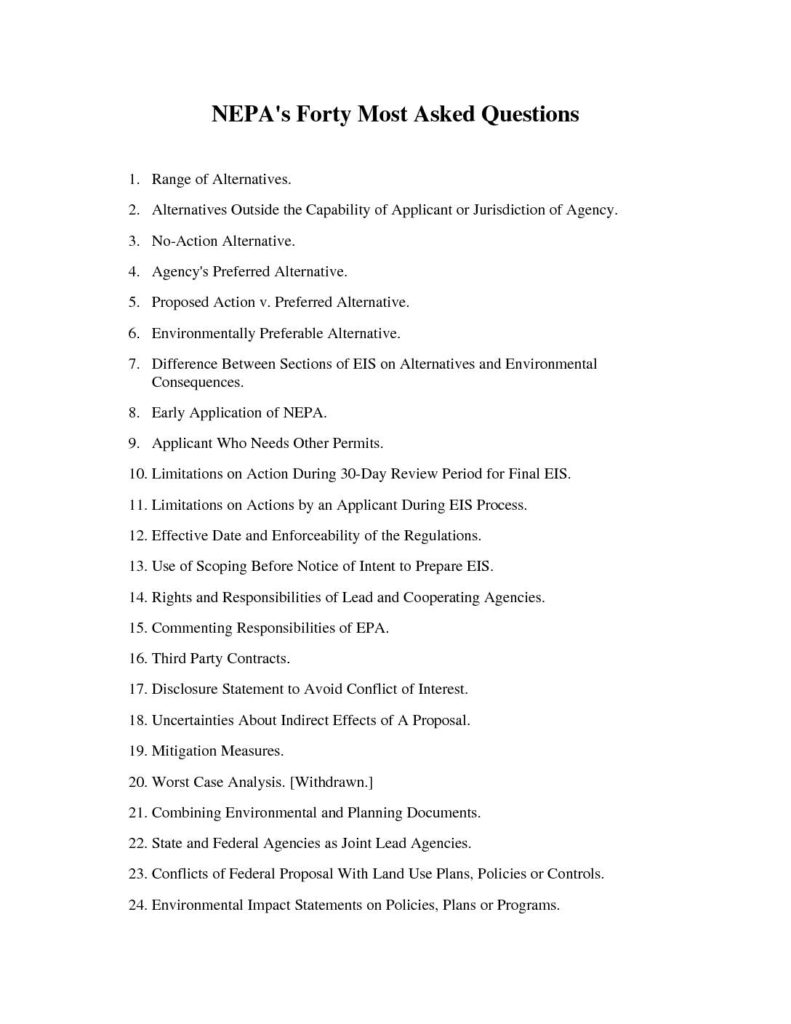Notes:
1. Range of Alternatives.
2. Alternatives Outside the Capability of Applicant or Jurisdiction of Agency.
3. No-Action Alternative.
4. Agency’s Preferred Alternative.
5. Proposed Action v. Preferred Alternative.
6. Environmentally Preferable Alternative.
7. Difference Between Sections of EIS on Alternatives and Environmental
Consequences.
8. Early Application of NEPA.
9. Applicant Who Needs Other Permits.
10. Limitations on Action During 30-Day Review Period for Final EIS.
11. Limitations on Actions by an Applicant During EIS Process.
12. Effective Date and Enforceability of the Regulations.
13. Use of Scoping Before Notice of Intent to Prepare EIS.
14. Rights and Responsibilities of Lead and Cooperating Agencies.
15. Commenting Responsibilities of EPA.
16. Third Party Contracts.
17. Disclosure Statement to Avoid Conflict of Interest.
18. Uncertainties About Indirect Effects of A Proposal.
19. Mitigation Measures.
20. Worst Case Analysis. [Withdrawn.]
21. Combining Environmental and Planning Documents.
22. State and Federal Agencies as Joint Lead Agencies.
23. Conflicts of Federal Proposal With Land Use Plans, Policies or Controls.
24. Environmental Impact Statements on Policies, Plans or Programs.
25. Appendices and Incorporation by Reference.
26. Index and Keyword Index in EISs.
27. List of Preparers.
28. Advance or Xerox Copies of EIS.
29. Responses to Comments.
30. Adoption of EISs.
31. Application of Regulations to Independent Regulatory Agencies.
32. Supplements to Old EISs.
33. Referrals.
34. Records of Decision.
35. Time Required for the NEPA Process.
36. Environmental Assessments (EA).
37. Findings of No Significant Impact (FONSI).
38. Public Availability of EAs v. FONSIs.
39. Mitigation Measures Imposed in EAs and FONSIs.
40. Propriety of Issuing EA When Mitigation Reduces Impacts
